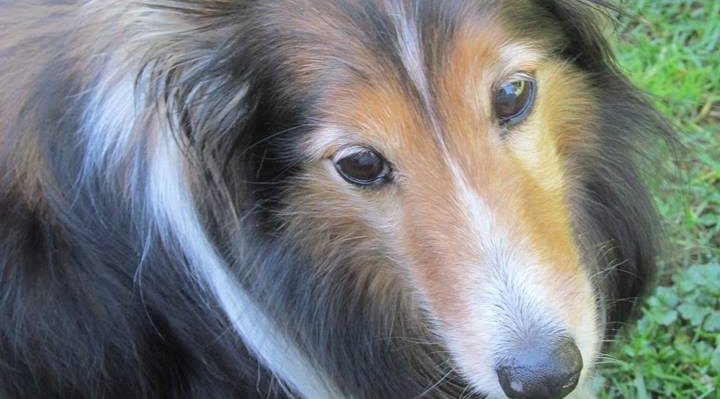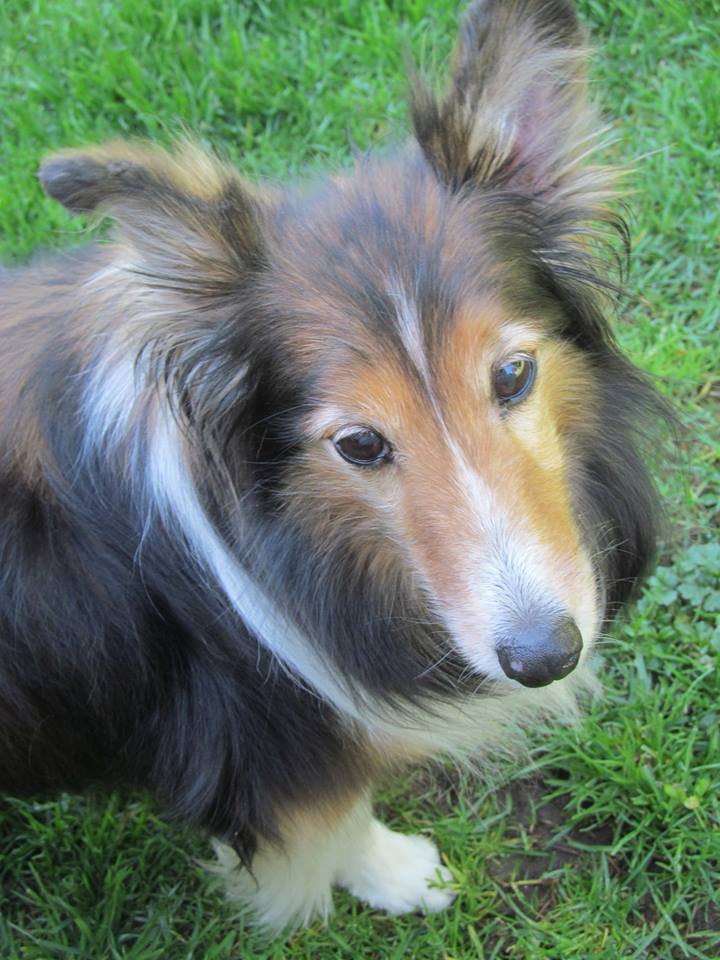
For the last two weeks, I’ve gone step-by-step in explaining how to teach your dog to wait at doors inside your home. This week, I’ll explain how to expand the dog’s skills to include doors to the outside, like your front or back door and the doors or hatch in your vehicle.
First, let me suggest some cue words:
“WAIT” cues your dog to pause where he is.
“OKAY” releases your dog from the position he’s in.
“HERE” cues your dog to come to you.
There are no rules about cue words; pick any words you want. Choose those that are easy for you to remember, though, because you must be consistent. Your dog should hear the same words from every human who’s taking care of him. It’s easier on the dog and easier on the humans.
By now, you’ve spent time and effort “explaining” to your dog that he should pause when he is with you and you start to open a door. You’ve done your job well and now your dog is hesitant about actually crossing that threshold! Don’t worry, that’s absolutely normal. You must be as encouraging and patient during these next steps as you were in the training that’s led up to this.
You’re at the point where you are able to stop with the dog on one side of a closed door, reach out and touch the door handle, open the door all the way . . . and your dog is still waiting where he was.
It’s finally time to step through the door . . . but please take it slowly. Fast movements on your part may cause the dog to break his position. (Should that happen, go several steps back in the training and build up a firmer understanding that his position should not be broken.)
Set the dog up for success by literally taking a single step, then turning back and rewarding the dog, where he is, with praise and treats. Take two steps and do it again. Keep going. Turning back to the dog, so that you are facing him and moving toward him, should give him little reason to bound forward.

Now it’s time to add in what will be, for the dog, a new behavior: moving from his position on the other side of the doorway, either to come to you or to be “free.” I suggest you start with coming to you.
Use your recall command. I’ve suggested “HERE” as a recall cue. It’s usually combined with coming to you and sitting, while you take hold of the dog’s collar, praise (“Good Here!”), and reward with treats.
You’ve worked hard on the dog’s waiting in position and you don’t want to detract from what you’ve already done—so here’s the trick. Call the dog to come to you only once out of every ten repetitions. The other nine times, do not call the dog to come, but instead turn to face the dog and step back to him before praising and treating him. Does that make sense?
One in ten times is a good starting ratio for calling to come versus returning to reward.
When you’re not working specifically on doors, you may see your recalls (calling to come) being affected. If so, take immediate action to do more recalls in more places with more and better rewards. Don’t lose your good recall because your dog is confused and hesitant. You always want a fast, willing recall!
Another cue to introduce to your dog as he practices in doorways is a “release” word: “OKAY!” It means that the dog is released from the position he is in and free to do what he wishes until additional cues are given. You don’t use a “release” to tell your dog it’s okay to run out your front door into the street. You leash the dog before opening the door, then call the dog to come to you from inside as you step out. By contrast, “OKAY” means “you’re on your own!” It’s not a behavior that is safe for an unleashed dog in an unfenced yard near a busy street.
“OKAY” is, however, very appropriate if your dog’s waiting inside the door to your fenced back yard, where he’s being invited to run out and play safely. In that case, your release tells the dog that he is free to go through the door and keep on going to play or potty in the yard.
Dogs often anticipate the next cue . . . or the cue they imagine will be next!. Discourage anticipating by not setting up a pattern. (“She always lets me run out once the door is open.”) Be unpredictable and reward the dog’s correct choices effusively. For example, if your dog often breaks position and lunges out your back door without your okay—even though he’s really good when you practice with inside doors—work up to fully opening the door to your yard. Instead of releasing the dog, call him back into the house, then heap enormous amounts of praise and treats on him.
Instead of the dog’s thinking, “I know what’s gonna happen next,” you want the dog to think, “I wonder what’s going to happen next?” You can do it!
Waiting at doors should be a default behavior. But as you expand the scope of your training sessions, consider adding a verbal cue—“WAIT”—and a hand signal. That means you can start training the behavior in circumstances that don’t include an actual doorway.
But—and this is so important—the “WAIT” cue does not get repeated. You can’t add a second, sterner “WAIT” if your dog begins to move toward the open door without being released.
Do not pollute the cues. Keep them for what they should be: a verbal description of what the dog is going to do. Not—may I repeat, not—a back-up “order” when the dog is already failing to wait. Okay?
Where to take the behavior your dog has learned at doorways? Anywhere there’s a change from area to area, one surface to another—for example, at the top of stairs when the dog is walking with you, when you’re crossing from sidewalk to lawn areas. Practice going in and out of slider doors at a friend’s house if you don’t have sliders in your own home.
Take the behavior to your vehicle, too. Practice first, if possible, with your car inside a closed garage, for absolute safety and lower blood pressure. Ideally, your dog should learn to “WAIT” not only while you open a car door or a back hatch, but also while you leash him up. The leash should not be his cue to jump out of the vehicle!
Waiting at doors, gates, and at any transition from one area or one surface to another is a skill that can make your dog’s life safer and your life much, much easier.
It takes time to train. Start today, work on it every day, as many times a day as you can (within reason!). Keep it fun and positive for you and for your dog. No matter where you are in the many teaching steps, you and your dog have a better relationship for the time and effort you both are spending. Good for you!



